The Broh Building
Introduction
Author-Uploaded Audio
Listen to a narration of this entry's description by Emma Satterfield.
Text-to-speech Audio
Images
Third avenue east from 9th Street, with the Broh Building at right, circa 1905
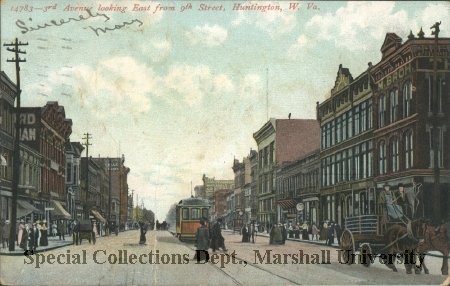
Looking South on 9th St from 3rd Ave, 1911
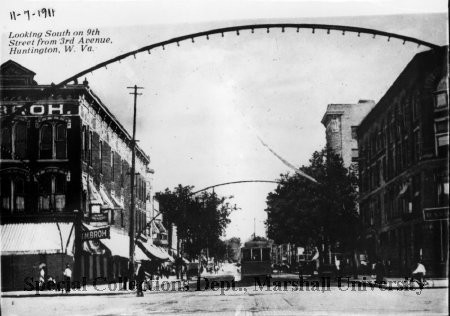
Ad for Broh Brothers Clothing, 1897
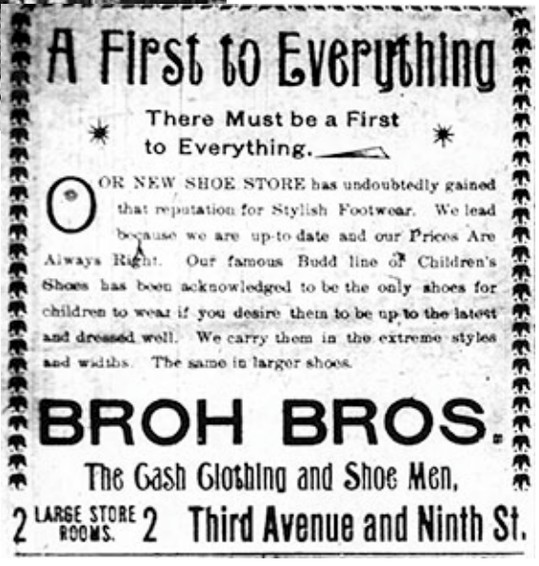
9th Street, looking South from 3rd Ave, with the Broh Building barely visible at the left
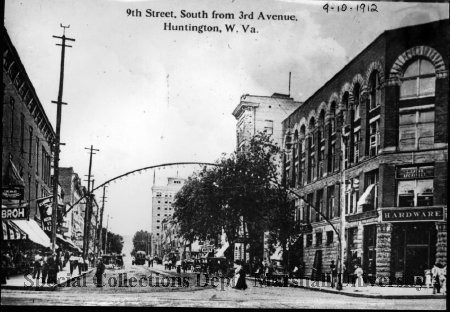
3rd Avenue looking east, with the Broh Building at right, 1919
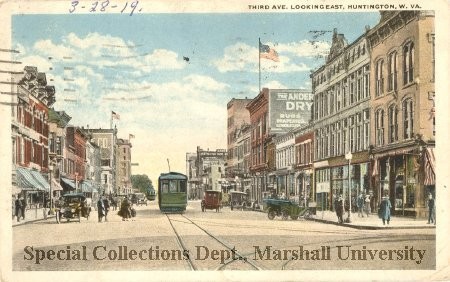
The Broh Building, at right, during the 1937 flood
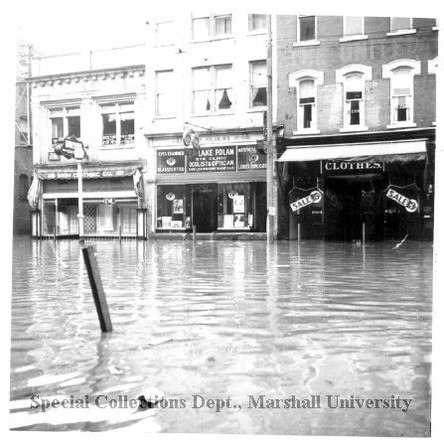
The Broh Building, housing Dunfee's Shoes, in 1985
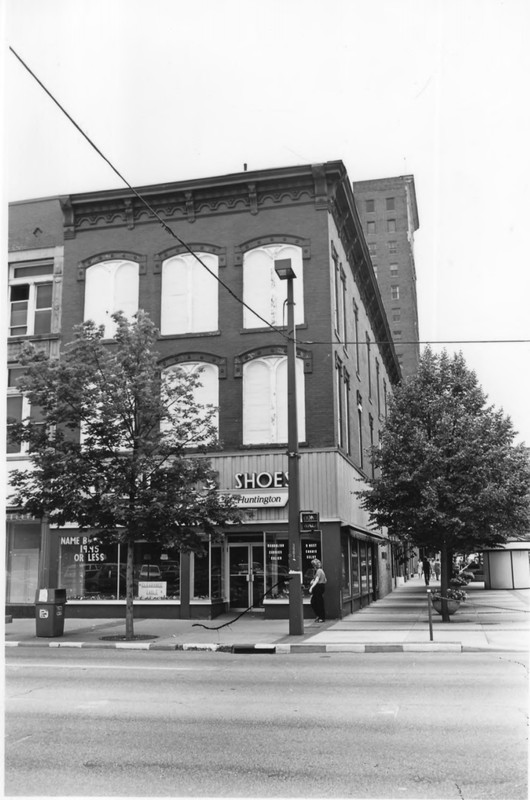
3rd Avenue with the Broh Building, housing Dunfee's Shoes, in 1985
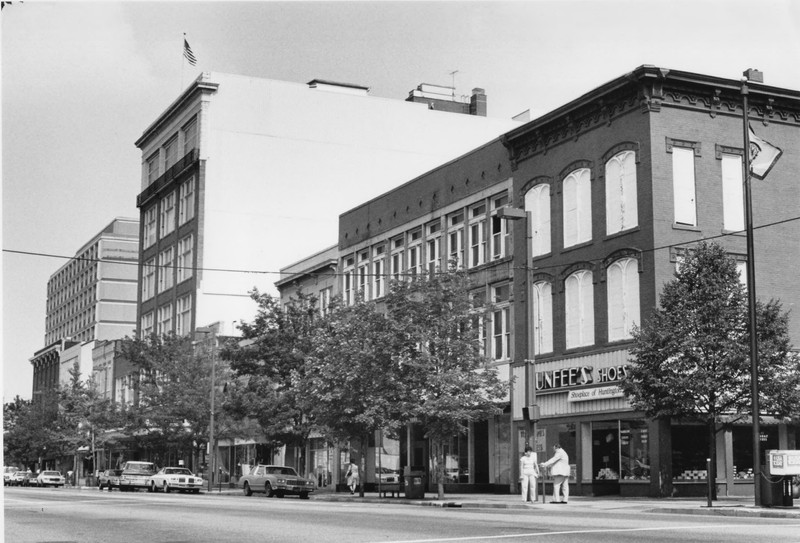
The Broh Building, pictured before it was restored
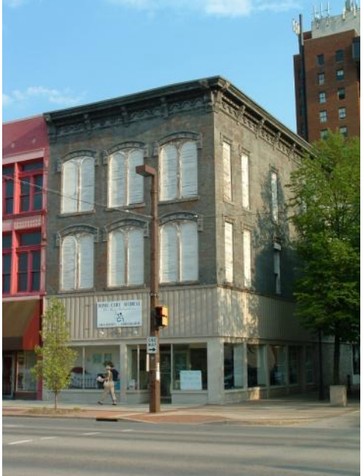
Backstory and Context
Text-to-speech Audio
The Brohs were a prominent family in the years following Huntington’s foundation in 1871. A German immigrant, Adolph Broh was a professional tailor in New York before serving as a Confederate soldier in the Civil War. After he was injured during the Battle of Shiloh, Broh returned to tailoring, eventually opening several shops in Kentucky. He also founded a men’s clothing store in the new city of Huntington, which he trusted his sons Mike and Julius to run. Adolph Broh sold the brothers a lot of land located at the southeast corner of 3rd Avenue and 9th Street, where they could erect a building to house the business. In addition to operating their own business, the Brohs were active in other aspects of the young city’s economic and cultural development. Mike and Julius were charter members of the Ohev Sholom Temple, which remains Huntington’s main Jewish center, and they were involved in the development of the Huntington Chamber of Commerce.
Built during the 1880s, the Broh Building is regarded as the oldest extant commercial building in downtown Huntington. It represents one of the earliest phases of construction in the city, at a time when buildings began to be constructed with brick or cut stone after many of the first wooden buildings had been destroyed by fire. The Broh Building was designed by architect James B. Stewart in the Italianate style, with a few Renaissance features. During the 1880s, the Italianate style was very popular in downtown commercial districts throughout the United States. Italianate-style buildings were usually flat-topped with two or more stories and featured decorative window moldings and large storefront windows. The Broh Building followed this trend, as a brick masonry block with a flat roof, large display windows on the ground floor, and windows with hood moldings on its 9th Street facade. The 3rd Avenue facade, meanwhile, had distinctive pairs of arched Renaissance windows. Overall, the building was designed to have an impressive appearance that set the store apart from its competitors while remaining consistent with contemporary architectural trends.
Mike and Julius Broh operated their men’s clothing store out of the Broh Building for many years. Various professionals, including dentists and doctors, also moved their offices to the upper floors of the stylish new building, which came to be commonly referred to as Broh Corner due to its large size. In 1904, the brothers reportedly dissolved their business, and the building at 901 3rd Avenue came under new ownership. Over the years, the building housed a number of businesses and offices. Its appearance was also altered, although it was not fundamentally changed. At one point, the building was painted gray and the windows on the upper two floors were covered up. On the ground floor, 1960s-era ceramic tile and a metal mock board and batten cladding were added. As of 1985, when the building was included as part of the Downtown Huntington Historic District, the ground floor retail space was occupied by Dunfee’s Shoes, but the building later sat vacant for many years.
In 2005, local doctor and real estate developer Dr. Joseph B. Touma purchased the Broh Building and restored it to its original grandeur. Since 1993, Touma has bought and renovated many long-neglected buildings in the heart of Huntington in an effort to revitalize the city’s downtown, including most of the buildings on the 900 block of 3rd Avenue. After buying the Broh Building, Touma’s team removed the ceramic tile from the first floor entrance and discovered the building’s original cast-iron columns, which had been hidden from sight for years. They also noticed the building’s unique foundation, which consisted of large stone blocks rather than brick or concrete. After the building was restored, it became available as a retail and office space. The building is currently home to an AT&T store and local entrepreneur, Paula Vega, of Paula Vega Cakes.
Sources
Cabell County Architectural Guide Tour A: Huntington Downtown Section. Huntington, WV. Marshall University, 2009.
Casto, James E.. Touma details efforts to restore local buildings in new book, Huntington Herald-Dispatch. November 15th 2009. Accessed December 16th 2019. https://www.herald-dispatch.com/news/recent_news/touma-details-efforts-to-restore-local-buildings-in-new-book/article_4a20c299-05e3-51c2-86e5-24faa5979f7b.html.
Dickinson, Jack L. and Alison K. Summer-Ramirez. Historic Huntington Businesses: The Birth of Huntington, W.Va. 1871-1900. Huntington, WV: Marshall University Libraries, 2016.
https://marshall.pastperfectonline.com/photo/940797BA-4B10-4862-9F3E-704062948520
https://marshall.pastperfectonline.com/photo/72E07FAF-414B-4AB9-ACCD-701638788060
https://mds.marshall.edu/cgi/viewcontent.cgi?article=1005&context=lib_manu
https://marshall.pastperfectonline.com/photo/36BB9CD9-FB6A-482B-8C72-443671706907
https://marshall.pastperfectonline.com/photo/BDC99A09-302C-45FA-BBC3-745985022673
https://marshall.pastperfectonline.com/photo/A4FF783F-9626-4774-80AB-022180201243
https://npgallery.nps.gov/GetAsset/45d870d3-ddee-427e-a537-fe8e60301dc6
https://npgallery.nps.gov/GetAsset/45d870d3-ddee-427e-a537-fe8e60301dc6
http://www.marshall.edu/special-collections/bozolli/pdf/TourA-HuntingtonDowntown-final.pdf
